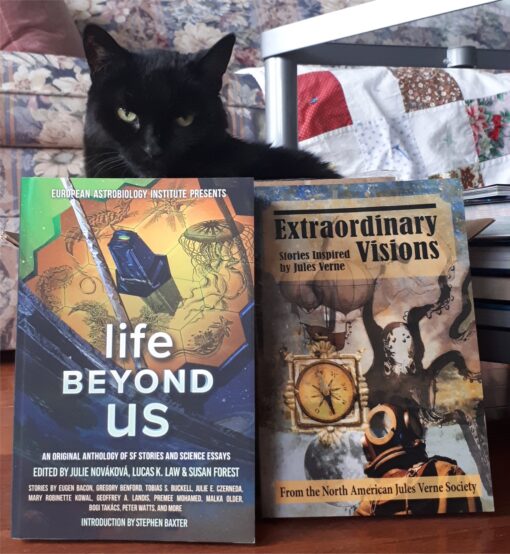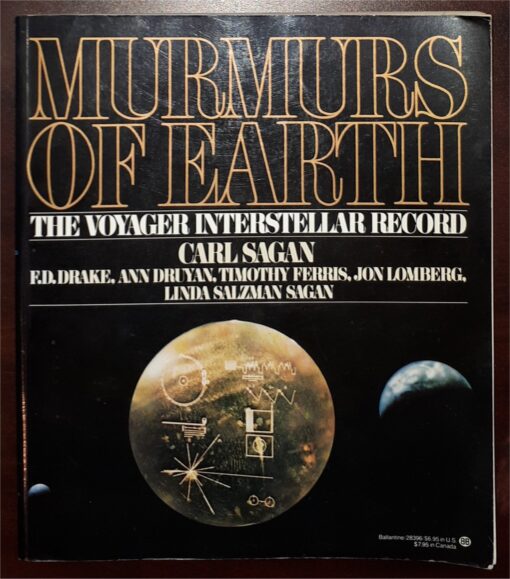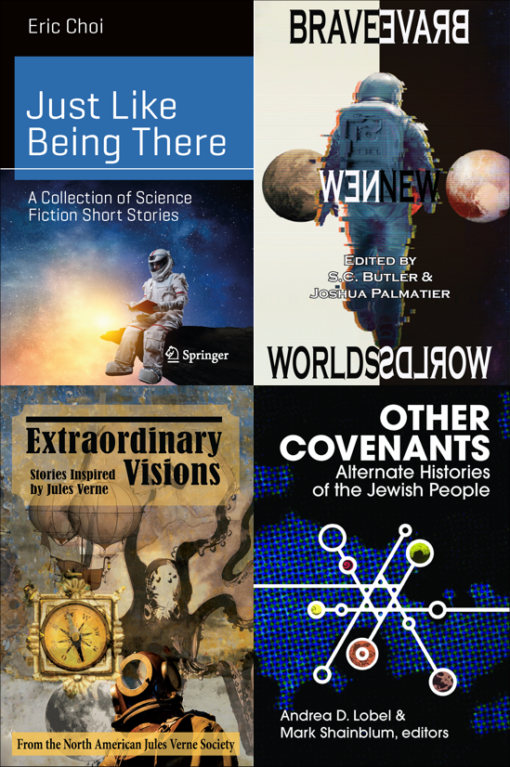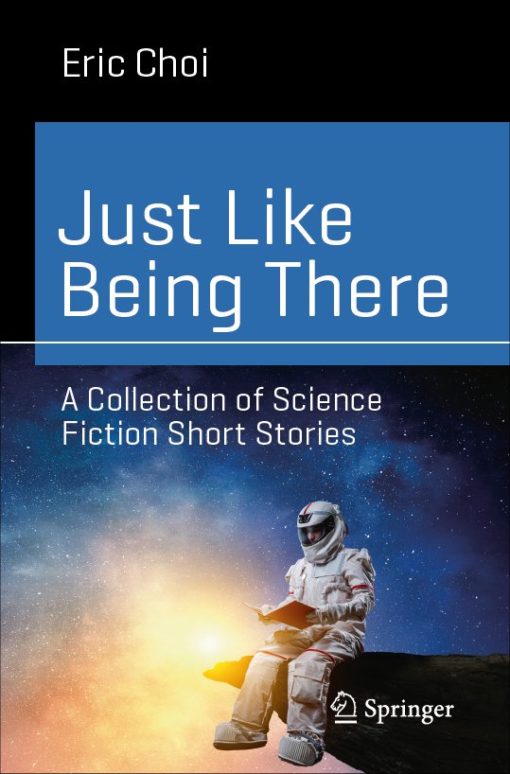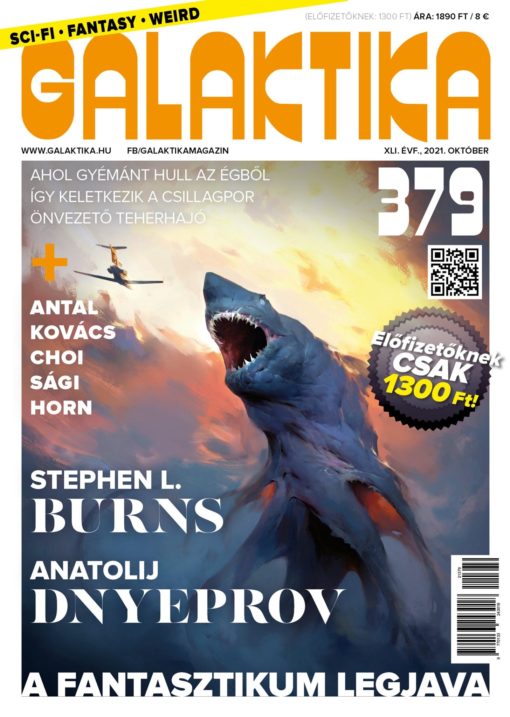My contributor copies of the anthologies Life Beyond Us and Extraordinary Visions, under the watchful visage of an extraordinary terrestrial lifeform.
Life Beyond Us is the new astrobiology-themed science fiction anthology from the European Astrobiology Institute and Laksa Media Groups, edited by Julie Nováková, Lucas K. Law, and Susan Forest. The book features twenty-seven stories, each accompanied by an essay written by a scientist in a relevant field. Opening the collection is my new story “Hemlock on Mars” with the accompanying science essay “Planetary Protection: Best Practices for the Safety of Humankind (And All Those Aliens Out There)” by Giovanni Poggiali of Observatoire de Paris. Life Beyond Us will be arriving to our planet on Earth Day (April 22).
Extraordinary Visions is the first-ever fiction anthology presented by the North American Jules Verne Society, edited by Steven R. Southard and Matthew Hardesty. The book featuring thirteen stories inspired by the writings of Jules Verne including my story “Raise the Nautilus” which closes the collection. Extraordinary Visions is available now in paperback and hardcover. Check out the review on the Nerds of a Feather website.
While their themes are different, these books have much in common. Both are beautiful, with gorgeous cover art by Dan O’Driscoll and Amanda Bergloff respectively, and vividly illustrated interior designs. Both are ambitious, with terrific stories brought together by visionary editors who are passionate about the respective themes of their books. I am grateful and proud to be a part of these anthologies.
